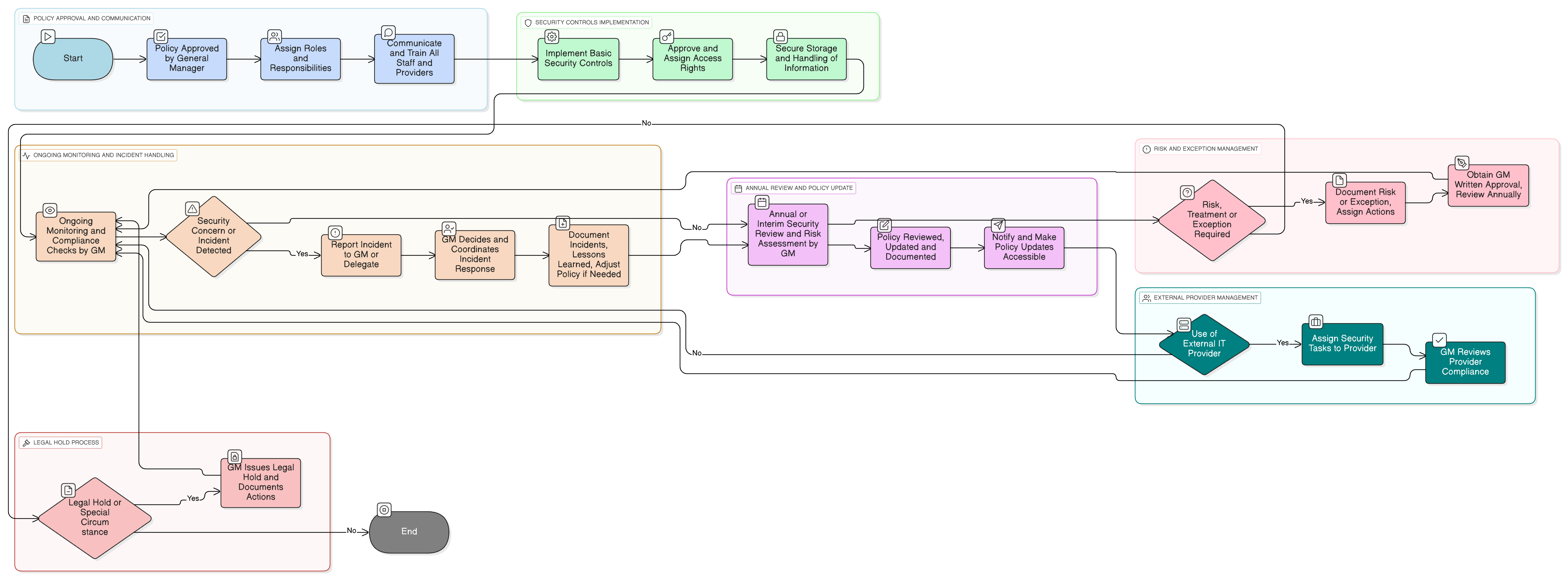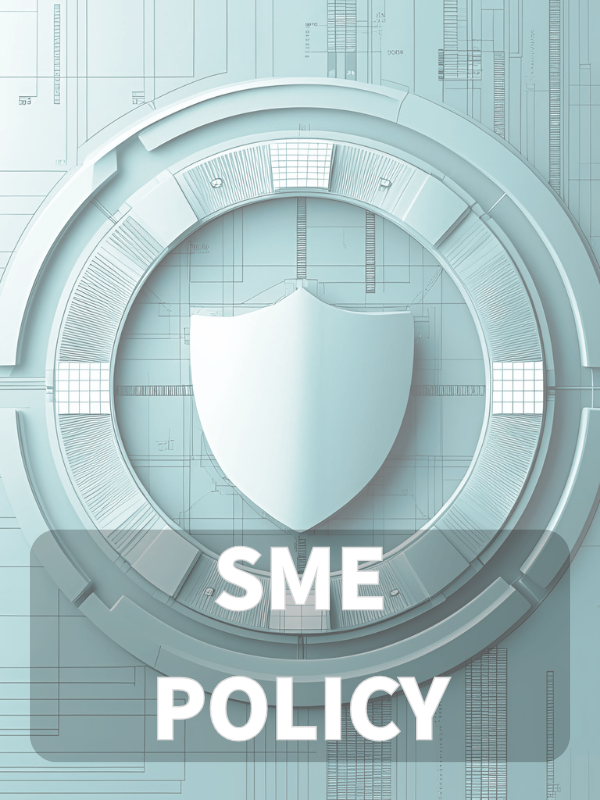Overview
This SME Information Security Policy defines practical, enforceable security responsibilities and measures, assigning accountability mainly to the General Manager, to ensure data protection and compliance with ISO/IEC 27001:2022, especially for organizations without dedicated IT teams.
SME-Friendly Security
Designed for organizations without dedicated IT staff, with clear roles for the General Manager and employees.
ISO/IEC 27001 Ready
Aligns with ISO/IEC 27001 certification requirements, making audit readiness achievable for small businesses.
Clear Accountability
Ensures defined responsibilities and practical rules for all staff, including external providers.
Comprehensive Coverage
Applies to all staff, contractors, systems, and data across office, remote, and cloud environments.
Read Full Overview
Policy Diagram

Click diagram to view full size
What's Inside
Scope and Applicability
Roles and Assignment of Responsibility
Governance Requirements
Basic Security Controls
Policy Exception Handling
Annual Review and Communication
Framework Compliance
🛡️ Supported Standards & Frameworks
This product is aligned with the following compliance frameworks, with detailed clause and control mappings.
Related Policies
Access Control Policy-SME
Defines secure handling of access to company information.
Governance Roles And Responsibilities Policy-SME
Clarifies the assignment of security duties and responsibilities.
Information Security Awareness And Training Policy-SME
Provides essential guidelines for staff training and awareness.
Data Protection And Privacy Policy-SME
Ensures compliance with GDPR and other data protection laws.
Incident Response Policy-SME
Describes detailed actions required in response to security incidents.
About Clarysec Policies - Information Security Policy - SME
Generic security policies are often built for large corporations, leaving small businesses struggling to apply complex rules and undefined roles. This policy is different. Our SME policies are designed from the ground up for practical implementation in organizations without dedicated security teams. We assign responsibilities to the roles you actually have, like the General Manager and your IT Provider, not an army of specialists you don't. Every requirement is broken down into a uniquely numbered clause (e.g., 5.2.1, 5.2.2). This turns the policy into a clear, step-by-step checklist, making it easy to implement, audit, and customize without rewriting entire sections.
Atomic, Auditable Structure
Requirements are individually numbered for easy tracking, implementation, and document updates without risk of error.
Policy Exception Handling
Formal process for policy exceptions enables practical flexibility while documenting every deviation for audit purposes.
Linked SME Policy Ecosystem
Directly integrates with other SME policies, ensuring seamless ISO/IEC 27001 compliance and operational security.
Frequently Asked Questions
Built for Leaders, By Leaders
This policy was authored by a security leader with 25+ years of experience deploying and auditing ISMS frameworks for global enterprises. It's designed not just to be a document, but a defensible framework that stands up to auditor scrutiny.
